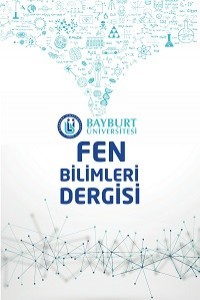W ve Nb İlavesi ile Modifiye Edilmiş Ferritik Sünek Dökme Demirlerin Karakterizasyonu
Bu çalışmanın amacı, ekzoz manifoldu olarak kullanılan ticari SiMo alaşımlarına alternatif ferritik sünek dökme demirlerin Mo yerine W ve Nb kullanımı ile geliştirilmesidir. Kimyasal kompozisyon tasarımında dengedeki bütün faz dönüşümlerinin izlenmesi için Thermo-Calc yazılımı kullanılmış ve elde edilen bulgular ticari SiMo alaşımı ile karşılaştırılmıştır. Hesaplamalar, kompozisyonda bulunan Mo, W ve Nb alaşım elementlerine bağlı olarak M6C ve MC gibi karbürlerin oluştuğunu göstermiştir. Hesaplanan kritik dönüşüm sıcaklıkları W ve Nb kullanımının yanı sıra, arttırılmış Si içeriği ile daha yüksek değerlere kaymıştır. Tasarlanan kompozisyonlar döküm yoluyla üretilmiş ve mikroyapısal özellikleri çeşitli metalurjik analizlerle belirlenmiştir. Deneysel çalışmalar (i) hesaplamalar ile tahmin edildiği gibi mikroyapının ferritik matriks içerisinde grafit ve karbürlerden oluştuğunu, (ii) grafit morfolojisinin alaşım elementine bağlı olarak değiştiğini ve Nb katkısının grafit morfolojisini küreselden vermikülere doğru değiştirdiğini göstermiştir.
Anahtar Kelimeler:
ThermoCalc, SiMo dökme demir, alaşım tasarımı, karakterizasyon
Characterization of Ferritic Ductile Cast Irons Modified by W and Nb Additions
The aim of this study was to develop ferritic ductile cast irons as alternative exhaust manifold materials to commercial SiMo alloy using elements like W and Nb in place of Mo. In the compositional design, Thermo-Calc software was used to follow all the phase transformations at equilibrium and obtained results were compared with the commercial SiMo alloy. Calculations revealed several alloy carbides such as M6C and MC depending on the presence of Mo, W and Nb within the composition. The calculated critical transformation temperatures shifted to higher ones by the usage of W and Nb in place of Mo and higher Si. The designed compositions were then cast and their microstructural features were characterized by several metallurgical analyses. The examinations on the cast alloys showed that; (i) microstructural features i.e. ferritic matrix, graphite, carbides were present within the solidified structure as predicted, (ii) graphite morphology varied according to the alloying element and Nb strongly deteriorated graphite morphology by changing it from spheroidal to irregular spheroidal and vermicular.
Keywords:
ThermoCalc, SiMo ductile cast iron, alloy design, characterization,
___
- [1] Y-J. Kim, H. Jang, Y-J Oh, “High-temperature low-cycle fatigue property of heat-resistant ductile-cast irons” Metall. Mater. Trans. A, vol. 40A, p. 2087-2097, 2009.
- [2] X Wu, G. Quan, R. Macneil, Z. Zhang, X. Liu, C. Sloss, “Thermomechanical fatigue of ductile cast iron and its life prediction”, Metall. Mater. Trans. A, vol. 46, no. 6, p. 2530–2543, 2015.
- [3] P. Matteis, G. Scavino, A. Castello, D. Firrao, “High-cycle fatigue resistance of Si-Mo ductile cast iron as affected by Temperature and strain rate”, Metall and Materi Trans A, vol.46A, p. 4086-4094, 2015.
- [4] L. M. Åberg, C. Hartung, “Solidification of SiMo nodular cast iron for high temperature applications”, Trans Indian Inst Met vol. 65, no.6, p.633–636, 2012.
- [5] M. Ekström, S.Jonsson,” High-temperature mechanical-and fatigue properties of cast alloys Intended for use in exhaust manifolds”, Mater. Sci. Eng. A, vol 616, p.78–87, 2014.
- [6] P. Matteis, G. Scavino, A. Castello, D. Firrao, High temperature fatigue properties of a Si-Mo ductile cast iron, Procedia Mater. Sci., vol. 3, p. 2154-2159, 2014
- [7] D. Li, Discussion of “Microstructure and hot oxidation resistance of SiMo ductile cast irons containing Si-Mo-Al”, Metall and Materi Trans B, vol. 49B, p. 858-859, 2018.
- [8] M. Ekström, P. Szakalos, S. Jonsson, Influence of Cr and Ni on high-temperature corrosion behavior of ferritic ductile cast iron in air and exhaust gases, Oxid. Met. vol. 80, p. 455–466, 2013.
- [9] A. A. Partoaa, M. Abdolzadeh, M. Rezaeizadeh, “Effect of fin attachment on thermal stress reduction of exhaust manifold of an off road diesel engine”, J. Cent. South Univ. vol. 24 p. 546−559, 2017.
- [10] F. Tholence, M. Norell, High Temperature Corrosion of Cast Alloys in Exhaust Environments. II—Cast Stainless Steels, Oxid Met, vol. 69, p. 37–62, 2008.
- [11] J. P. Shingledecker, P. J. Maziasz, N. D. Evansa, M. J. Pollard, Creep behavior of a new cast austenitic alloy, Int. J. Press. Vessels Pip. vol. 84, p.21–28, 2007.
- [12] Y. Zhang, M. Li, L. A. Godlewski, J. W. Zindel, Q. Feng, Effects of W on creep behaviors of novel Nb-bearing high nitrogen austenitic heat-resistant cast steels at 1000 °C, Mater. Charact. vol. 139 p. 19–29, 2018.
- [13] G. E. Totten, Steel Heat Treatment, second ed. Portland, Longman, New York, 2006.
- [14] X. Chen, J. Xu, H. Hu, H. Mohrbacher, M. Kang, W. Zhang, A. Guo, Q. Zhai, “Effects of niobium addition on microstructure and tensile behavior of ascast ductile iron”, Mater. Sci. Eng. A, vol 688, p. 416-428, 2017.
- [15] A. Bedolla-Jacuinde, E. Solisand, B. Hernandez, “Effect of niobium in medium alloyed ductile cast irons”, Int, J. Cast Met. Res., vol. 16, no. 5, p. 1-6, 2003.
- Yayın Aralığı: Yılda 2 Sayı
- Başlangıç: 2018
- Yayıncı: Bayburt Üniversitesi
Sayıdaki Diğer Makaleler
Alper KİRAZ, Nilay GENÇER, Mehmet TAŞ, Çağatay TEKE
W ve Nb İlavesi ile Modifiye Edilmiş Ferritik Sünek Dökme Demirlerin Karakterizasyonu
Gülşah AKTAŞ ÇELİK, Şeyda POLAT, Şaban Hakan ATAPEK, Gregory N. HAIDEMENOPOULOS
Düşük Karbonlu Çelik Malzemenin Rijitlik Değerinin Deneysel ve Teorik Yaklaşım ile Belirlenmesi
Engin ERBAYRAK, Kerem ASMAZ, Alparslan SOLAK
Uçucu Kül ve Bayburt Taşı ile Zemin Stabilizasyonu
Mesut TAŞ, Duygu FİDAN, Fatih YILMAZ
SiMo sünek dökme demirin katı partikül erozyonu
Gülşah AKTAŞ ÇELİK, Şeyda POLAT, Şaban Hakan ATAPEK, Sinan FİDAN
Harun AKOĞUZ, Semet ÇELİK, Özlem BARIŞ
Bayburt İli Su Kaynaklarının Mevcut Durumu ve Su Ürünleri Üretiminin Geleceği
